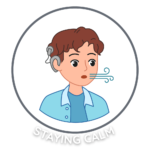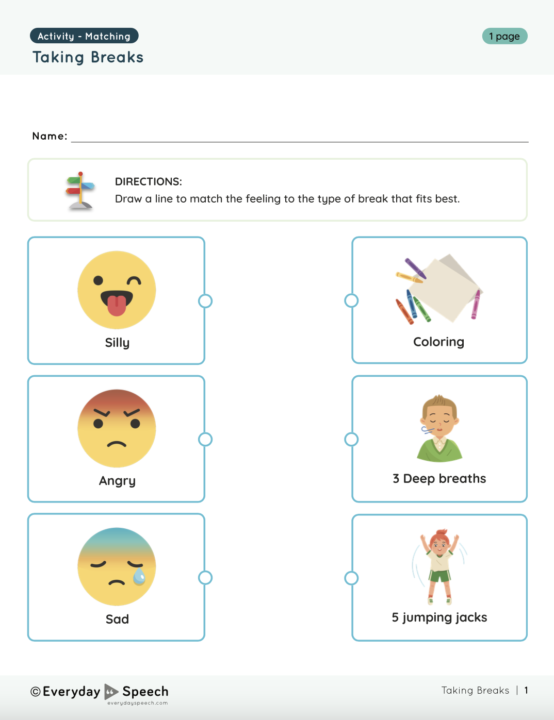
Self-regulation is a critical skill that preschoolers need to start learning early on. It helps them manage their emotions and behaviors in ways that are safe and beneficial to their overall development. For preschool teachers, finding an engaging self-regulation activity for preschoolers can be challenging. This blog post introduces an effective visual matching worksheet designed to help young learners identify their feelings and connect them with appropriate self-regulation strategies. The activity not only promotes emotional awareness but also encourages physical responses that can help manage those feelings.
The Importance of Self-Regulation in Early Childhood
Self-regulation in early childhood is about learning how to recognize and manage one’s emotions and behaviors. Effective self-regulation skills can lead to better social interactions, enhanced learning experiences, and emotional well-being. Teaching these skills in preschool is essential as it lays the foundation for handling complex feelings and situations that children will encounter as they grow.
Self-Regulation Activity for Preschoolers: Introducing the Matching Worksheet
The visual matching worksheet for self-regulation is specifically designed for preschoolers to help them understand and link different emotions with corresponding activities that can mitigate intense feelings. The worksheet features three primary emotions—silly, angry, and sad—paired with three different ‘break types’ that can help manage these emotions.

How It Works
- Identify Emotions: The worksheet starts with images representing different emotions.
- Match with Activities: Each emotion on the worksheet is associated with a physical activity. Children match the emotion with the suggested activity that could help them feel better.
- Engage Physically: After matching, children are encouraged to perform the activity associated with each emotion. This not only helps in reinforcing the concept but also allows children to experience firsthand how different activities can alter their emotional state.
Benefits of Using the Visual Matching Worksheet
Enhances Emotional Literacy
By working with the worksheet, preschoolers learn to identify and articulate their emotions. This early literacy in emotions is crucial for developing empathy and interpersonal skills.
Promotes Healthy Coping Mechanisms
The activity teaches children that ALL feelings are normal and that there are healthy ways to manage them.
Encourages Physical Activity
Linking emotions to physical activities can help children understand the mind-body connection early in life. Physical activities like coloring, breathing exercises, and jumping jacks not only help in regulating emotions but also contribute to better physical health.
Unlock ALL of our preschool materials by signing up for your free trial today – no credit card required!
Access the full Social Communication Curriculum HERE!
Instant access to thousands of no-prep social skills activities, over 1000+ video lessons, and engaging games designed to enhance learning and development.
Conclusion
This self-regulation activity for preschoolers is an excellent tool for teaching young children how to connect their feelings with appropriate actions. It helps them understand their emotions, gives them strategies to manage those emotions, and does so in a fun and engaging way. For preschool teachers, this activity is not just a way to fill time—it’s a crucial part of developing healthy, happy, and well-adjusted children.
Sample Video
Students learn best from watching real students their own age model skills. Try out this sample video lesson. We offer our entire Social-Emotional Learning platform free for 14 days here!
Related Blog Posts:
Everyday Speech Pre-K Materials Are Here!
Fun and Engaging Social Skills Activities for Preschoolers
Free Preschool Self-Regulation Skills Material





